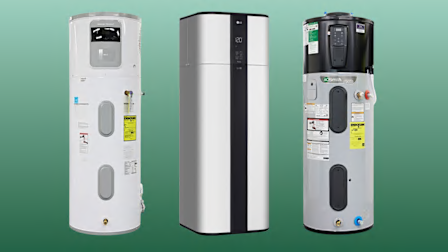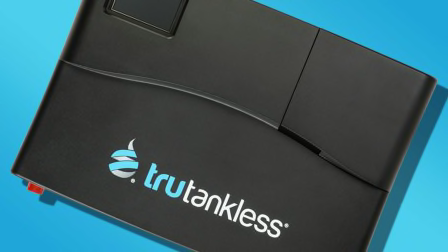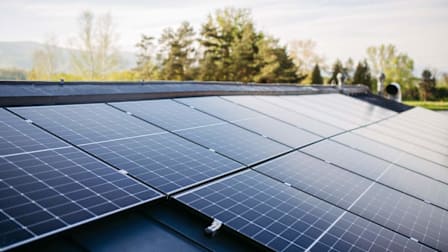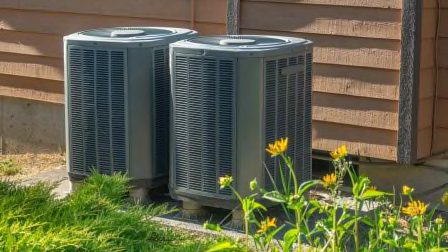How to Get a Solar Tax Credit While You Still Can
The credit ends on Dec. 31. Here's how to do your homework on a tight deadline.
The solar tax credit has been a boon to homeowners who want to invest in solar panels. Many of our members have told us how adding solar has allowed them to lower their electric bills or even bring those bills down to zero.
But if you’re thinking about going solar and leveraging the federal tax credit to do it, you have only until the end of 2025 to act. The solar tax credit had previously been available through 2032 as part of the Inflation Reduction Act. But Congress recently cut it short, along with other Residential Clean Energy Credits and energy-efficient Home Improvement Credits, as part of its latest tax and spending plan.
What Is the Solar Tax Credit?
If you install solar energy equipment in your residence before the end of 2025, you’re entitled to a nonrefundable credit off your federal income taxes equal to 30 percent of eligible expenses. There’s no dollar limit on those expenses; you’re entitled to that 30 percent tax break whether you spend $20,000 or more than $100,000 on costs associated with a residential solar system.
People who will reap the most benefit include those who pay a lot for their electricity (or expect to in the future), those who usually owe the IRS at tax time, those who plan to buy (not lease) solar panels, and those who expect to stay put in their homes for a while.
What Are the Steps Involved in Getting Solar Panels?
This is important information to understand when thinking about the timeline for getting solar panels operational. You should plan on the process taking up to a few months, and it varies according to where you live.
You need to factor in time to vet installers, get quotes (more on that below), and make sure your roof is a candidate for panels. Once you have a good installer and sign a contract, the installer should acquire the necessary permits, get approval from your utility company, install the panels, schedule necessary inspections, and lastly, get your utility company to connect your panels to the grid.
Do Panels Need to Be Functional by Jan. 1 to Get the Tax Credit?
It depends on whom you ask. As we mentioned, the new tax and spending bill signed into law in July brings the solar tax credit to an abrupt end in 2025. Starting Jan. 1, 2026, there will no longer be a solar tax credit. But the bill language isn’t explicit about whether solar panels must be fully operational or not by the end of the year. (As of this writing, the IRS didn’t have any new guidance on its website, nor was the website updated with the new 2025 deadline.)
The solar advocacy group Solar United Neighbors interprets the new law to mean that solar panels must be fully operational by the end of this year to qualify for the credit. (The group emphasizes that it is not a tax adviser and can’t provide definitive tax advice.) But interpretations of the law vary.
“We are hearing very different things,” says Roger Horowitz, vice president of Go Solar programs at Solar United Neighbors. “A lot of installers are treating the end of the year as—if your system is installed, you’re good to go. More cautious companies are saying your system needs to be inspected.”
Is there still time to go solar and get the tax credit? Horowitz says yes. But consumers will need to sign a contract with an installer in a matter of weeks, and that contract should only come after thorough vetting. “Do your regular research, just on an accelerated timeline,” he says.
How to Find a Solar Installer
Working with an experienced installer is central to having a positive solar experience. Horowitz offers these best practices for vetting companies:
Get at least three bids. Start by looking at companies recommended by neighbors or others in your area who have had good experiences.
Go local. Find companies that have already been established in your area and have expertise with local permitting processes and utility companies.
Avoid door-to-door sales. Horowitz says he has heard of roving teams of solar salespeople looking to expand in certain jurisdictions but who don’t have an established local business yet. “First of all, we don’t recommend buying stuff door-to-door,” he says. If anything, “tell them, ‘Hey, give me your proposal. I always want to get three proposals.’ ”
Read online reviews. Make sure they’re good and plentiful. You’re looking for a contractor with hundreds of good reviews, not just a handful.
Check to see whether the company has signed an ethics pledge. Certain states and even counties have solar associations with ethics pledges that companies can sign. For example, Solar United Neighbors helped create an ethics pledge in Ohio.
Once you have found a company you want to work with, ask whether it can complete the work and have your solar panels operational by the end of 2025 to make sure you can qualify for the tax credit.
Horowitz says he has heard of companies telling customers they can complete the work as long as customers commit with enough lead time. Some companies may insist on having a contract signed as soon as Sept. 1. You’ll want to get this commitment in writing, Horowitz says, and ask what recourse you have if the installer isn’t able to complete the project by Dec 31.
What Expenses Are Eligible for the Solar Tax Credit?
According to the Internal Revenue Service, those expenses are:
- Solar photovoltaic (PV) panels
- PV cells used to power an attic fan (but not the fan itself)
- Contractor labor for on-site preparation, assembly, or original installation
- Permitting fees, inspection costs, and developer fees
- All equipment needed to get the solar system running, including wiring, inverters, and mounting equipment
- Storage batteries. (You can claim the tax credit for these even if you buy and install them a year or more after you install the solar system; eligible units must store at least 3 kilowatts.)
- Sales taxes on eligible expenses
How Will the Solar Tax Credit Save You Money?
The credit lowers your federal taxes. So if you spend $24,000 on a system, you can subtract 30 percent of that, or $7,200, from the federal taxes you owe. (You must take the credit for the year the installation is completed.) If, say, you would owe $7,000 in taxes before the credit, a $7,200 credit would drop what you owe to zero. You can’t get a tax refund for the $200 remainder.
You’ll save, too, in lower electricity bills because you’re using less energy from the grid. You may also get a credit from your utility company if you send excess energy back to it. How much you’ll save depends on a number of factors, including how much electricity your household uses, the size of your system, the amount of sunlight it gets, and local electricity rates. Real estate experts say a purchased solar system—as opposed to a leased one—can raise the value of your home when you sell.
Who Can Get the Solar Tax Credit?
It’s available to all taxpayers for their primary or secondary residence in the U.S. Taxpayers of any income level can take advantage of it. You can use it whether you itemize your taxes or take the standard deduction.
Keep in mind, though, that the solar tax credit is available only if you purchase a solar system; if you lease one, you can’t take advantage of the credit. The same applies if you’re a member of a power-purchasing cooperative. But if you’re a tenant-stakeholder in a co-op, you can claim credit for your portion of the purchase. You can also claim credit for your portion of the purchase of a community-owned solar system.
Do You Still Get the Federal Tax Credit If Your State Also Offers One?
Your federal tax credit isn’t reduced by any solar tax credit your state may offer. But it’s up to your state’s taxing authority whether state credit will be reduced if you take advantage of the federal one.
New York, for example, doesn’t cut its solar incentives for people who take advantage of federal ones. State residents can credit 25 percent of qualified solar energy system equipment expenditures from their state taxes, up to $5,000. You don’t get a refund if that amount is more than what you’d owe.
Can You Use This Credit If You Also Use Other Federal Energy Tax Credits?
Yes. You can also take advantage of the federal Energy Efficient Home Improvement Credit, which covers other qualifying efficiency upgrades, such as Energy Star certified exterior windows, Energy Star certified exterior doors, air-sealing insulation, upgraded electrical circuit panels, and heat pumps. But you have limited time. Like the solar tax credit, the Energy-Efficient Home Improvement Credit expires on Dec. 31, 2025.
This credit for energy efficiency upgrades has dollar caps for some products—for example, $600 on windows. For most items, however, you can claim 30 percent of the cost up to $1,200. (Heat pumps are exempt from the per-item or per-year maximums; you can claim up to $2,000 for heat-pump purchase and installation costs.)


















